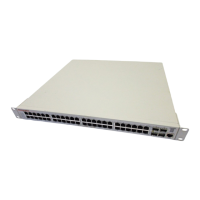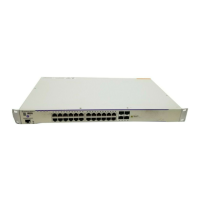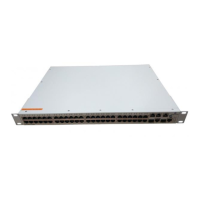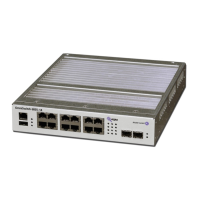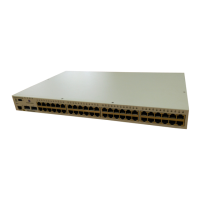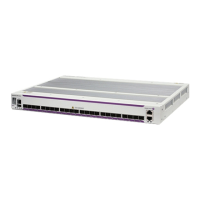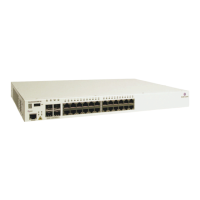Using Switch Logging Switch Logging Commands Overview
OmniSwitch AOS Release 8 Network Configuration Guide December 2017 page 36-6
Specifying an IP Address for Switch Logging Output
To specify a particular IP address destination (e.g., a server) for switch logging output, enter the swlog
output command, specifying the target IP address to which output is sent. For example, if the target IP
address is 168.23.9.100, you would enter:
-> swlog output socket ipaddr 168.23.9.100
No confirmation message appears on the screen.
Disabling an IP Address from Receiving Switch Logging Output
To disable all configured output IP addresses from receiving switch logging output, enter the following
command:
-> no swlog output socket
No confirmation message appears on the screen.
To disable a specific configured output IP address from receiving switch logging output, use the same
command as above but specify an IPv4 or IPv6 address. For example:
-> no swlog output socket 174.16.5.1
Configuring the Switch Logging File Size
To configure the size of the switch logging file, use the swlog output flash-file-size command. To use this
command, enter swlog output flash file size followed by the number of bytes. (The maximum size the file
can be is dependent on the amount of free memory available in flash.)
For example, to set the switch logging file to 500000 bytes enter:
-> swlog output flash file-size 500000
Clearing the Switch Logging Files
You can clear the data stored in the switch logging files by executing the following command:
-> swlog clear
This command causes the switch to clear all the switch logging information and begin recording again. As
a result, the switch displays a shorter file when you execute the show log swlog command. You want to
use swlog advanced when the switch logging display is too long due to some of the data being old or out
of date.
No confirmation message appears on the screen.

